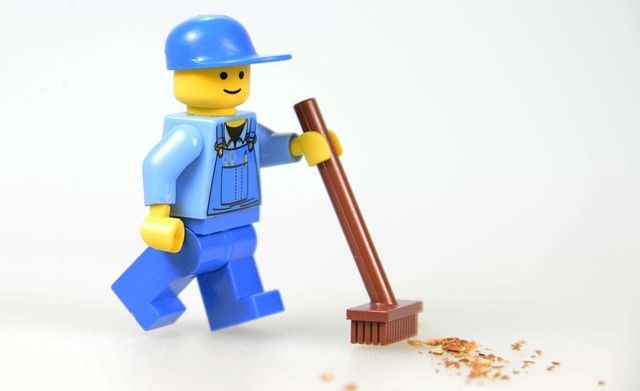In a surprise move that will be seen as a major step towards sustainability for the plastics industry, the German toymaker Playmobil recently announced its intention to manufacture its toys using a minimum of 90% plant-based raw materials.
Up until the announcement, the much-loved plastic figures were made from fossil-based acrylonitrile butadiene styrene (ABS) plastic. However, manufacturing was switched last month (January 2024) to a new production process publicised as a major expansion of the toymaker's plant-based portfolio under the new brand of Playmobil Junior.
“The new playsets are made with raw materials that are at least 90 percent plant-based, as attributed by a ISCC certified mass balance approach,” reports the industry journal Plastics News. “The chemically recycled plastics use materials left over from food or paper production as feedstock.” With the company also promising to use “at least 90 percent recycled cardboard and 100 percent recycled paper for the packaging.”

The first Playmobil figures went on sale in 1974, although there were only three varieties at the time - an American Indian, a construction worker, and a medieval knight. Today, the company produces around 4,000 unique designs and has manufactured a total of more than three billion figures from its factory in Malta.
Such a large amount of plastic will have made a considerable carbon footprint over the past fifty years, so switching to a circular raw material is a bold and environmentally conscious step.
However, the move is actually a sound business decision, as it was prompted by market research of over 3,000 parents of young children (ages one to four) which examined play behaviour, parental expectations, and the function of toys for small children in China, Germany, and France.
“The results show that parents around the world attach great importance to the sustainability and quality of the toys their children play with,” explained a Playmobil spokesperson. Noting that almost 80% those surveyed in China and Germany gave sustainable raw materials as a reason for choosing one toy over another.

“After successfully establishing several classic product lines to now use recycled and bio-based plastics, converting the production of our toddler line is another important step on our ambitious sustainability agenda,” says Playmobil CEO Bahri Kurter.
The news will be a considerable blow to fellow toymaker and competitor Lego, which abandoned attempts to switch to recycled plastic feedstocks only last year. While the Danish company has invested heavily in other environmental steps, claiming to “have spent more than $1.2 billion on green initiatives, such as building windfarms to power its production facilities, using sugar cane as a bio-polymer feedstock for some bricks, and committing to reducing carbon emissions by 37% by 2030.”
However, the majority of Lego bricks are still manufactured from acrylonitrile butadiene styrene (ABS) made from virgin raw materials – the same feedstock which Playmobil has now moved away from.
At the time, Lego’s chief executive, Niels Christiansen, explained how there was no ‘magic material’ to make the toy completely sustainable. “We tested hundreds and hundreds of materials,” he said. “It's just not been possible to find a material like that.”
An outcome which is in stark contrast to Playmobil’s move towards eco-friendly feedstocks.

Perhaps Lego is placing greater concern over the need for durability in a toy’s raw material. Even Playmobil’s own research found that more than 74% of the parents surveyed claimed that “a product’s durability is the most important buying criterion.”
With Lego unable to move away from virgin plastic without increasing its carbon footprint or sacrificing the durability of its toys, the switch by Playmobil is an exceptionally bold one. Both company’s will be aware that a long lifespan is a key quality for any toy, especially one handled by rough-handed toddlers.
For now, only parents and children will be the judges of whether Playmobil or Lego have made the right choice in how to source industrial raw materials for their polymer toys. Meanwhile, plastics manufacturers everywhere will be closely watching the final results.
Photo credit: Jacqueline Macou from Pixabay, Alexa, Michael Schwarzenberger, & Vicki Hamilton